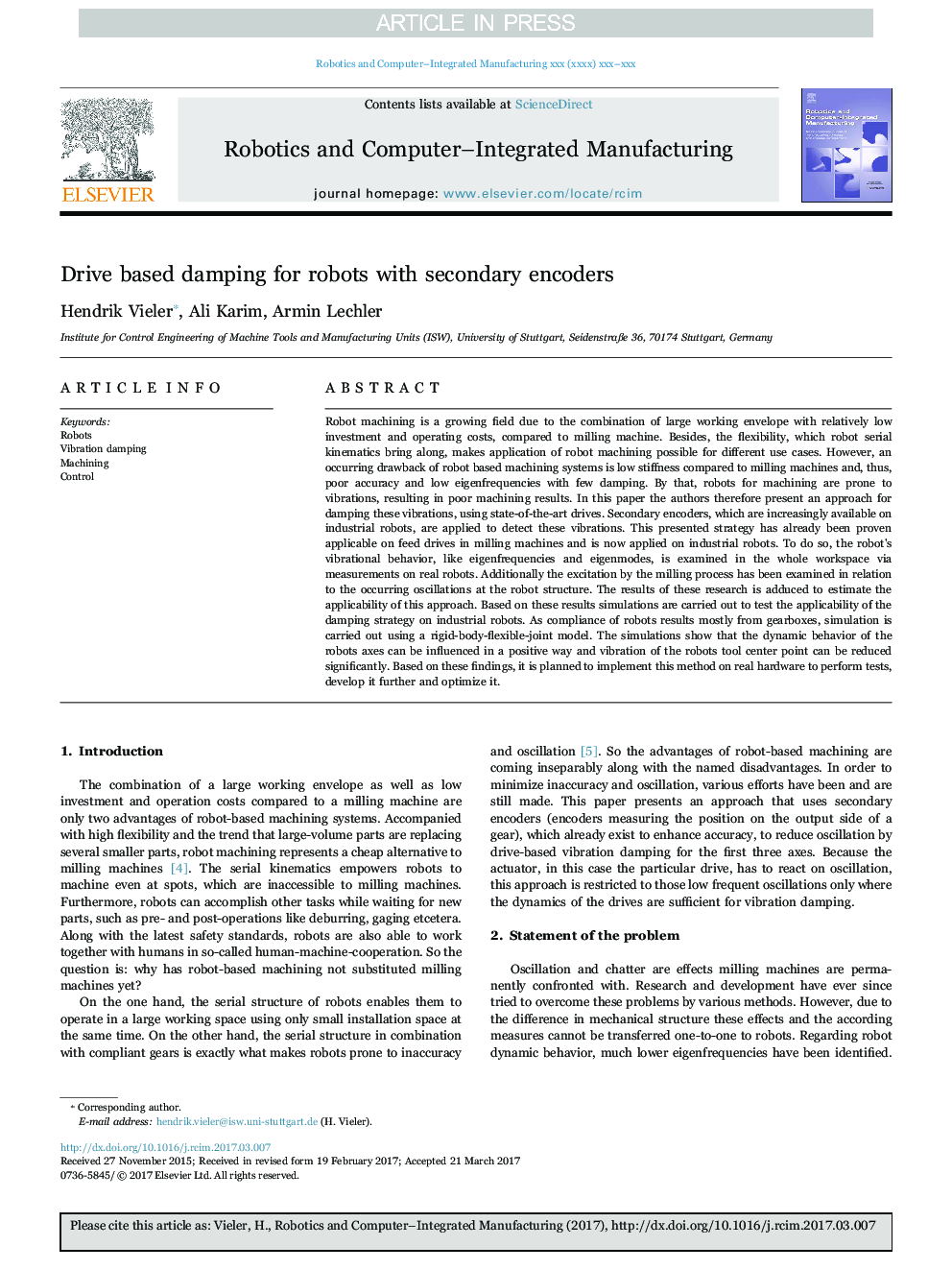| Article ID | Journal | Published Year | Pages | File Type |
|---|---|---|---|---|
| 4949016 | Robotics and Computer-Integrated Manufacturing | 2017 | 6 Pages |
Abstract
Robot machining is a growing field due to the combination of large working envelope with relatively low investment and operating costs, compared to milling machine. Besides, the flexibility, which robot serial kinematics bring along, makes application of robot machining possible for different use cases. However, an occurring drawback of robot based machining systems is low stiffness compared to milling machines and, thus, poor accuracy and low eigenfrequencies with few damping. By that, robots for machining are prone to vibrations, resulting in poor machining results. In this paper the authors therefore present an approach for damping these vibrations, using state-of-the-art drives. Secondary encoders, which are increasingly available on industrial robots, are applied to detect these vibrations. This presented strategy has already been proven applicable on feed drives in milling machines and is now applied on industrial robots. To do so, the robot's vibrational behavior, like eigenfrequencies and eigenmodes, is examined in the whole workspace via measurements on real robots. Additionally the excitation by the milling process has been examined in relation to the occurring oscillations at the robot structure. The results of these research is adduced to estimate the applicability of this approach. Based on these results simulations are carried out to test the applicability of the damping strategy on industrial robots. As compliance of robots results mostly from gearboxes, simulation is carried out using a rigid-body-flexible-joint model. The simulations show that the dynamic behavior of the robots axes can be influenced in a positive way and vibration of the robots tool center point can be reduced significantly. Based on these findings, it is planned to implement this method on real hardware to perform tests, develop it further and optimize it.
Related Topics
Physical Sciences and Engineering
Computer Science
Artificial Intelligence
Authors
Hendrik Vieler, Ali Karim, Armin Lechler,
